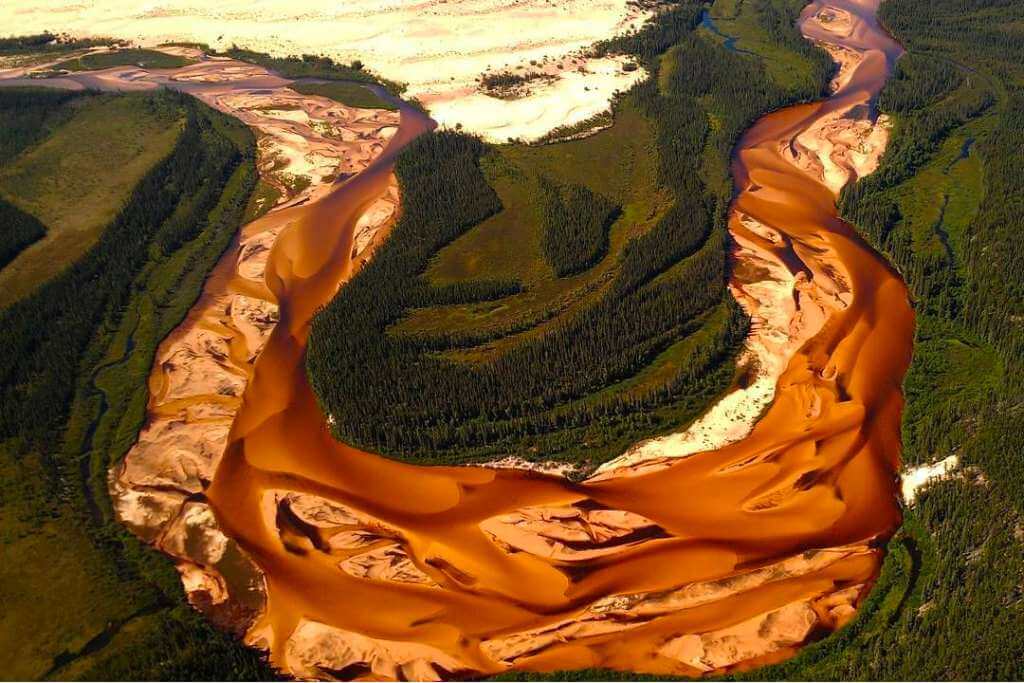Where would you go in the globe to observe sand dunes? Morocco? Mongolia? What is the Australian Outback? Try northern Saskatchewan, Canada. We’re serious- one of the world’s most remote and magnificent sand dune formations is in Saskatchewan. Hello and welcome to the Athabasca Sand Dunes!
What makes Athabasca Sand Dunes Provincial Park unique?
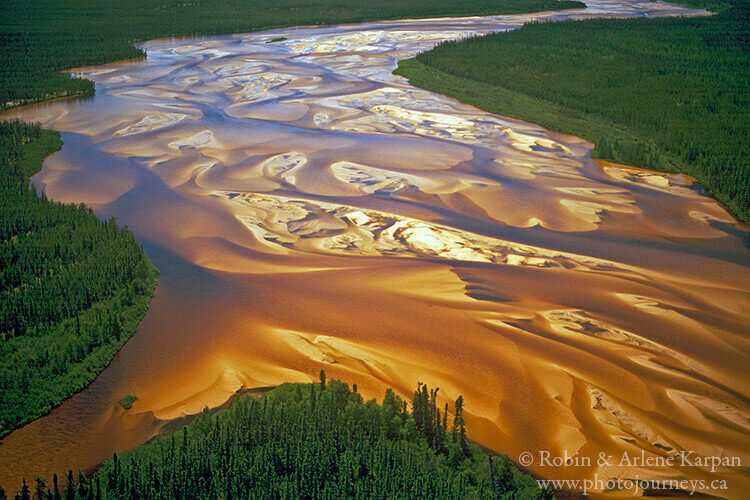
These are the largest sand dunes in Canada and the largest this far north anywhere in the world, stretching for nearly 100 kilometers along the south side of Lake Athabasca in Saskatchewan’s far north. But it’s not just their size that distinguishes them. As one might anticipate, most of the world’s great sand dunes are in deserts or highly arid locations. But not in this case. The Athabasca Sand Dunes are located in the heart of boreal forest and Lakelands, near to one of Canada’s largest lakes and surrounded by three rivers. Surprisingly, canoeing is the ideal way to explore these magnificent dunes. Isn’t it cool?
The Athabasca sand dunes are thought to be 8,000 years old, having formed at the end of the last glacial period. As glaciers receded, meltwater swept massive amounts of sand, silt, and sediment from local sandstone into Lake Athabasca, whose water level was substantially greater at the time than it is now. The enormous sand piles were uncovered as the lake level dropped to its current depth. The sand dunes are highly unstable, as winds frequently change them, pushing the dunes at the area’s margins into the adjacent woodland. Evidence also implies that fires have significantly impacted the winds that shape the dunes. In contrast to the dunes closer to the lake, the southern dunes are rather stable in comparison to other regions in the region.
How to Visit Saskatchewan’s Athabasca Sand Dunes in Canada?
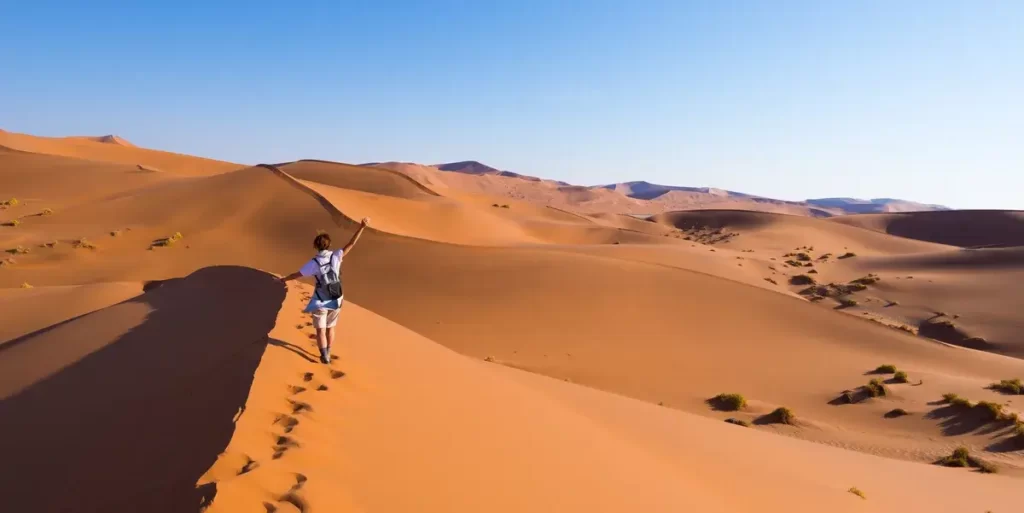
The Athabasca Sand Dunes are not easy or cheap to reach. These are the most challenging sand dunes to reach in Saskatchewan. It would help if you arrived by boat or float plane on Lake Athabasca’s southern shore. Fort MacMurray, Stony Rapids, and Fond du Lac are all accessible communities. The dunes can also be accessible by whitewater kayaking from the William River and the MacFarlane River.
Due to the high cost (and seat constraints) of float planes, a trip for 5-6 people can cost up to $15,000 per person. While I was able to organize my own unsupported trip to the dunes, Churchill River Canoe Outfitters offers guided tours to the dunes for around $5,000, not including return flights to Stony Rapids.
What exactly do you do here?
Canoeing in sand dunes
The combination of sand, trees, and water makes these dunes unique and picturesque. Because the dunes border a large lake and rivers run through them, canoeing is an option. What could be more exciting than paddling across sand dunes? This is our preferred mode of transportation, but it is also the most difficult to arrange because you must transport not only yourself, but also a canoe. Taking a canoe normally entails arranging for a float plane to tie a canoe to the pontoons, which is more expensive.
Investigate the William River.
One option is to canoe down the William River, where the last 25 kilometers or so flow right beside the vast William River Dune Field, with infinite options to explore further into the dunes. The last 18 kilometers of the river are a wide and shallow braided stream filled with sandbars. However, the William River is full of rapids and boulder gardens over the majority of its length, so whitewater canoeing abilities are required.
Hiking through the sand dunes
The most straightforward and cost-effective option is to be dropped off in the dunes by float aircraft or motorboat and then go on a trekking expedition. The shore of Thomson Bay (just east of the William River) adjoining the enormous Thomson Bay dune field is the greatest location for this. It’s about a 5-kilometer stroll along the edge of the dunes to the William River, which is where we’d arrive after paddling upstream for around 18 kilometers.
Other sand dunes in Saskatchewan, Canada
The Great Sand Hills
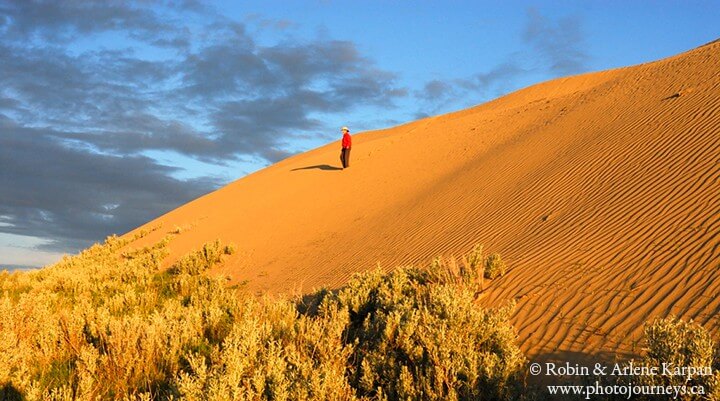
The Great Sand Hills in the southwest of the province are one of the most impressive sand dunes in Saskatchewan that are easily accessible. This active dunes area of 1900 square kilometers stands in stark contrast to the pastureland and farmland to the south.
These dunes soar 15 meters above the surrounding ground in the Great Sandhills Ecological Reserve. They are Canada’s second-largest dunes. (The first being the Athabasca Sand Dunes.) Mule deer, pronghorn, coyotes, and sharp-tailed grouse live there, among other animals.
Good Spirit Lake Sand Dunes Canada
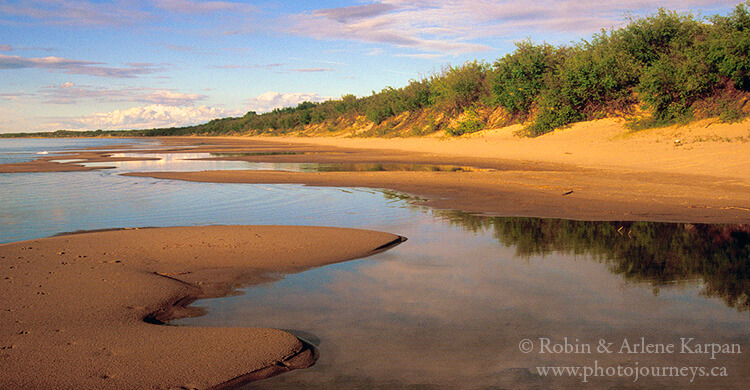
Meltwater collected up as the last glacier receded, forming Glacial Lake Saltcoats. Good Spirit Lake is located on the prehistoric lake’s western shore. On a beach or in a river delta, coarse sand was deposited. The prevailing north winds heaped the sand into dunes over time.
The Good Spirit sand dunes are now as tall as a five-story structure. It’s a 1.8-kilometer one-way walk from the main beach around the lake’s shores at Good Spirit Lake Provincial Park. The route has benches and is wheelchair accessible until you reach the water control structure. There is a boardwalk through the dunes at the conclusion of the hike. Because of the presence of poison ivy, it’s recommended to keep on the trail here. The boardwalk leads to a vantage point with panoramic views of Good Spirit Lake.
Look for purple sand along the shoreline on the short hike out. This beautiful sand color is caused by the mineral garnet weathering down into small particles and can be found on various Saskatchewan beaches.
Douglas Sand Dunes
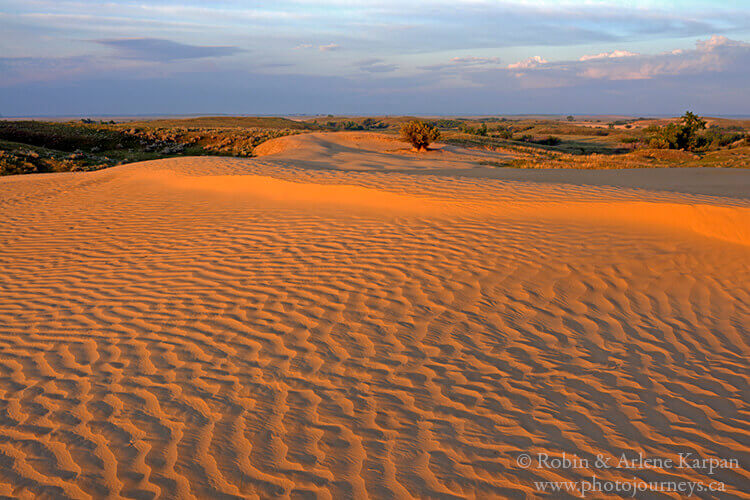
The Douglas Sand Dunes are almost equidistant from Regina and Saskatoon, making them the most accessible from a major urban center. These dunes are also the remains of a lake in the area during the last ice age.
Various hiking trails lead to the dunes. The routes take you through vegetation-covered stabilized dunes to the edge of the exposed dunes. The exposed sand, trough blowouts, and dune slip faces are seen here. The shortest route is a 5.7-kilometer out-and-back on the Dunes Trail. Make a loop by adding the 4-kilometer Cacti Trail for a change of scenery on the way back. Keep an eye out for poison ivy at the trail’s edge.
The Rocky Mountains: Unique Things To Know For An Interesting Trip
